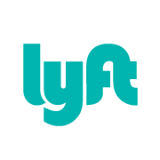I’ve been saying since the vehicles for hire saga began that we should circle back in a year or so and review how things have gone. Thanks to an academic study of users’ experiences with Uber, Lyft, and Sidecar in San Francisco, we now have a data point to suggest what we might expect here.
The study, conducted by Lisa Rayle, Susan Shaheen, Nelson Chan, Danielle Dai and Robert Cervero, surveyed 380 people intercepted in the evening in three popular San Francisco neighborhoods, where they had either just exited a car with one of these apps or used them recently. The group isn’t representative of all “ridesourcing” users in the Bay Area, as the researchers call them. But other data makes it possible to directly compare their experiences to taxi and transit use.
In one of their more striking findings, Rayle and co-authors found that 66 percent of the trips taken by people who use these app services would have been twice as long if taken by public transit instead (that’s if nearby transit was at least available). That number includes all of the time spent just waiting for the trip to begin.
[…]
An Uber car doesn’t move any faster through traffic than a taxi does. But the study also found that passengers were likely to wait significantly less for a “ridesourcing” car than a taxi. Using data from a taxi survey conducted by the San Francisco Municipal Transportation Agency, the researchers compared self-reported wait times for “ridesourcing” passengers and taxi riders, depending on the time of day and location in town.
During weekdays, 93 percent of “ridesourcing” passengers said they waited less than 10 minutes for a ride. For passengers ordering a Taxi, the same was true for only 35 percent of them.
[…]
When the researchers further divided this data by taxi zone across the city, they found that taxi wait times also differed significantly depending on location. Alternatives like Uber and Lyft, in other words, provided better service and service that was more consistent across time and location. Users prominently cited these advantages, along with the convenience of electronic payments, when asked why they used these apps.
It’s clear in all of this data that companies like Uber are filling an unmet need for better transportation. By doing so, they’re both complementing and competing with existing options. Many of these trips could not have been made easily by public transit, suggesting that these services supplement the transit network to some extent. Thirty-nine percent of people surveyed said they would have taken a taxi instead if these apps weren’t available. Another 8 percent, though, said they would not have made their trip at all if Uber, Lyft or Sidecar weren’t around. That means these companies are modestly expanding the market for rides, even as they steal business from taxis.
Read the whole thing, it’s worth your time. One thing this study highlights is the need for reliable and timely public transit, since a big reason why people used the TNCs in San Francisco is because they provided such faster trips, and often were the only viable alternative. This study also confirms that at least in San Francisco, cabs are losing business to the newcomers. They’re starting to fight back, which will warm the heart of anyone who believed that cab companies needed the competition. This is one study in one city, so it may not be representative of what’s happening elsewhere. I do hope someone does something like this in Houston.


